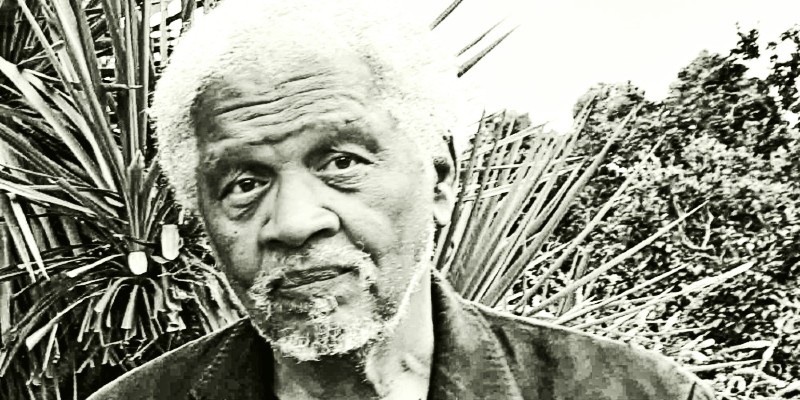
Mumbo Jumbo
By Alan Friedman
Aug. 6, 1972
Credit...The New York Times Archives
See the article in its original context from
“The Norton Anthology of Poetry” spans the centuries from Chaucer to Reed. Whether he likes it or not, Ishmael Reed has for some time now occupied a black outpost in a white landscape. To judge from his new book, he doesn't like it much. His latest work, written with black humor, is a satire on the unfinished race between the races in America and throughout history. It is a book of deliberate unruliness and sophisticated incongruity, a dazzling maze of black‐and‐white history and fantasy, in‐jokes and outrage, erudition and superstition. Not only to white readers like myself wilt the way into and out of this maze be puzzling. For though it's a novel, the author's method is not novelistic. Wholly original, his book is an
unholy cross between the craft of fiction and witchcraft.
I don't mean merely that “Mumbo Jumbo” is about such mysteries as HooDoo or VooDoo. “Black Herman walks to the bed, picks up her scarf, and casts it to the floor where it becomes a snake.” I mean that it attempts, through its deadpan phan tasmagoria of a plot, and through the black art of the Magus as storyteller, to achieve the kind of hold on the reader's mind that from ancient times and in primitive contexts has always been associated with the secret Word, the sacred Text.
The plot of “Mumbo Jumbo” is mind ‐ boggling. In the 1920's an epidemic called Jes Grew begins to infect the United States, especially its black citizens. Topsy said he “jes' grew,” but Reed traces the origins of the Jes Grew infection back to the Egyptian god Osiris. As the plague spreads in the 1920's, a worldwide conspiracy, the “Mu'tafikah(?),” be gins to seize African, Oriental, and native American art treasures from white museums “of Art De tention” in order to return them to the peoples who created them. Locked in deadly combat with this “Black Tide of Mud” are “an ancient society known as the Atonist Path” (Aton, the Sun God), “its military arm the Wallflower Order,” and the medieval Knights Templars. As someone in the book notices, “It has been an interesting 2000 years.”
But just what is this potent infection the author calls Jes Grew? “Ask Louis Armstrong, Bessie Smith, your poets, your painters, ask them how to catch it. Ask those people who be shaking their tambourines impervious of the ridicule they receive from Black and White Atonists, Europe the ghost rattling its chains down the deserted halls of their brains. Ask those little colored urchins who ‘make up’ those new dance steps and the Black cook who wrote the last lines of the ‘Ballad of Jesse James.’ Ask the man who, deprived of an electronic guitar, picked up a wash board and started to play it. The Rhyming Fool who sits in Re'‐mote Mississippi and talks ‘crazy’ for hours. The dazzling paradizing pun ning mischievous pre‐Joycean style play for Cakewalking, your Calinda, your Minstrelsy give‐and‐take of the ultra‐absurd. Ask the people who put wax paper over combs and blow through them. In other words, Nathan, I am saying Open‐Up‐To Right‐Here.”
The book is like that, frankly and consummately freewheeling, part historical funferal, here a highbrow satire, here a low‐key farce, even roman a clef. The villain of the piece is a controversial book publisher named Hinckle Von Vampton who wears “a black patch on his eye from an old war wound.” But Hinckle Von Vampton also turns out to be thousand‐year‐old Crusader who has learned to cheat death through a secret diet. Reed loves to mix his elements: spiritualists with cops and robbers, literary criticism with caricature, “a little bit of jive talk and a little bit of North Africa,” romance and necromancy, Egyptology, etymology, bibliography, hagiography, poli tics, Teutonic knights, and marvelously bizarre headlines—“MUSCLE WHITE BAGS COON.”
Through all this, though he tells a fast‐paced story, the author plays fast and loose with the conventions of storytelling. For example, in the very midst of a kidnapping, the ten sion is interrupted to provide—as motive for the kidnapping itself — a long myth of Osiris, Moses and Jethro. Readers will find the ex perience rough, unless they are willing to put aside the usual ex pectations about what a novel is supposed to be, and the satisfaction it is rumored to provide. Ishmael Reed is unique, and he has other things to offer. If one stays with “Mumbo Jumbo,” uncannily, the book begins to establish its very own life, on its very own terms.
The terms are demanding. Reed wants to convince, not persuade. When William Golding unfolds his fable in “Lord of the Flies,” when Kurt Vonnegut spins his satire in “Cat's Cradle,” we are led to be lieve in the fantasy by a persuasive context: by tone, detail, characters, timing and drama. Disbelief is in fact easy to suspend because belief is what the audience craves and the storyteller loves to create. But Ish mael Reed, in the manner of William Burroughs, avoids persuasion, he in vites disbelief. Our very refusal (in ability) to lend credence to the lurid anti‐logic of “Naked Lunch” leaves us reeling—and then, if we can still turn pages at all, mesmerized by the novel's inner vision. Still, Bur roughs deals in junk nightmares, Reed in black ritual. “I . . . I don't want to be difficult with you, Hiero thant 1 says pressing the button so that 3 weird looking dudes in 3d Man Theme trenches enter through the doors leading to the round room. One carrys the ritual dagger on
Reed's tone here and elsewhere is curiously flat, opaque, hypnotic and carefully chosen. Earlier, in “The Freelance Pallbearers,” he displayed a prose style of considerable trans parency and brilliance. That first novel was a satire, too. A tale of slapstick and martyrdom; persua sive, but not convincing. His second novel, “Yellow Back Radio Broke Down,” was a Gnostic Western, a bizarre epic of cowpunching, hexing, execution and papal interven tion. So wild that there the question of belief could hardly arise. “Drag bent over and french kissed the animal be tween his teeth, licking the slaver from around the horse's gums.” “A novel,” the hero asserted after shooting his horse, “can be anything it wants to be, a vaudeville show, the six o'clock news, the mumbling of wild men saddled by demons.”
“Mumbo Jumbo” is all of these, but it is also sterner stuff than anything in his earlier books. The author is after bigger game now, and he has taken a risk. His terms in “Mumbo Jumbo” go beyond those of fiction. Beneath the passions of individual charac ters, beneath the conflict of blacks and whites, beneath every plague and blessing in the book, lies an opposition be tween the gods, between Osiris and Aton (compare Dionysos and Apollo). There is a prece dent, a novel at once satiric and holy: “The Golden Ass” of Apuleius written for the an cient sect of Isis. But that was long ago. And Reed sees the problem:
“A sacred Black Work if it came along today would be left unpublished.” It would be “the essential Pan ‐ Africanism . . . artists relating across contin ents their craft, drumbeats from the aeons, sounds that are still with us.” However, since the ancient Text is still missing, “we will make our own future text.”
So I suspect that for Ishmael Reed “Mumbo Jumbo” is some thing a good deal more than a novel. Through all the wild gy rations of its black comedy, he casts a nonfiction spell, he weaves an incantation with footnotes, he endows his Text with power. And if one reads it through, one risks succumbing to the Text . . . or as Reed once put it in a poem, disappearing into it.
The hunger of this poem is legendary it has taken in many victims.






